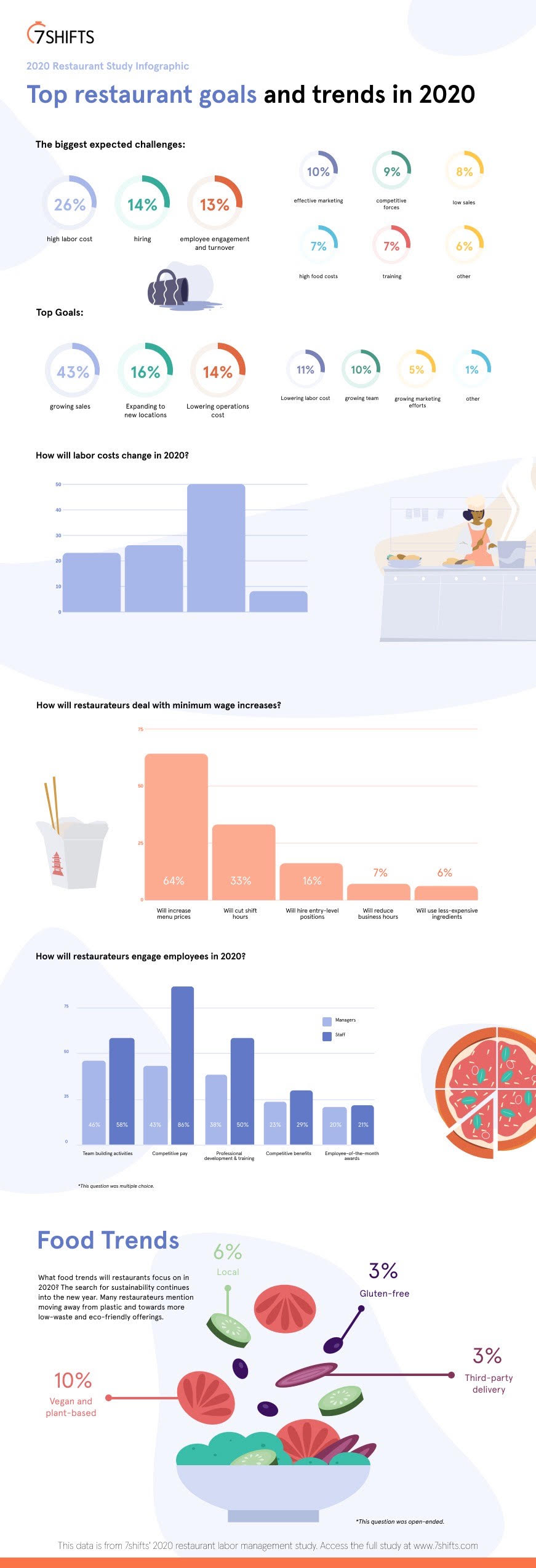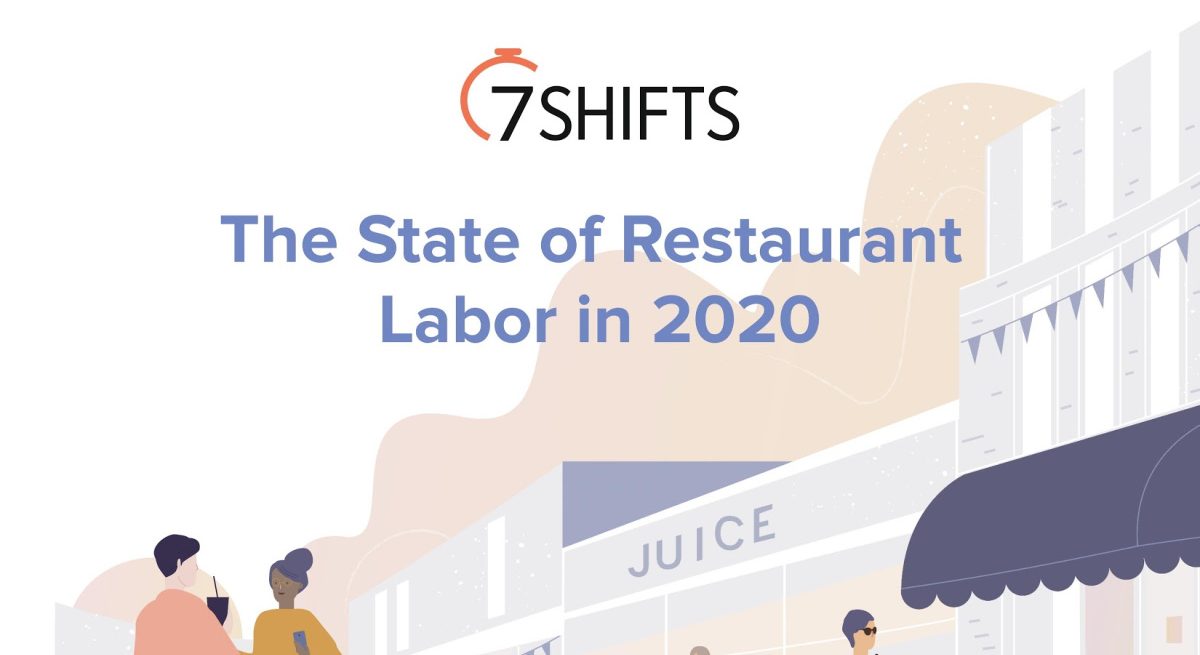7shifts Survey: Top Trends in Restaurant Labor Management (Infographic)
2 Min Read
Sixty percent of restaurants saw their labor costs increase in 2019 and 50 percent of respondents expect their labor costs to rise in 2020 and beyond, according to a survey of more than 1,000 restaurant managers, owners, and executives across North America conducted by 7shifts.
Other key statistics from the study include:
- The largest percentage of respondents (nearly 46 percent) said they would be investing in team building activities in 2020 in order to engage and retain employees, compared to other strategies like competitive pay and professional development that would potentially increase labor costs.
- 28 percent of survey participants said that high labor costs were their biggest restaurant challenge of 2019, with 33 percent of restaurant owner respondents predicting that high labor costs will remain their biggest hurdle in 2020.
- 64 percent of survey respondents said that they will increase menu prices in order to counter minimum wage increases due to new, local wage laws. Even though menu prices may increase, new food trends will bring new menu items, with 10 percent of participants who said that they’ll be focusing on vegan and plant-based options in 2020.
The study also includes open-ended insights from respondents that give an inside look into how restaurateurs are thinking about the future of their business, and the restaurant industry, as a whole. “My advice for 2020: make sure to take into account the rising cost of living and minimum wage increase for tipped employees,” one survey participant noted.
“We’re really excited about this study, and it’s one we plan on doing every year,” said 7shifts CEO, Jordan Boesch. “7shifts was born in restaurants, so we understand the frustrations of trying to keep up with the ever-evolving nature of industry. We’re here to be a key partner for restaurateurs, so we’ll continue to listen to the industry’s needs and produce more resources that empower restaurants to grow and prosper.”
The full study can be accessed here.


